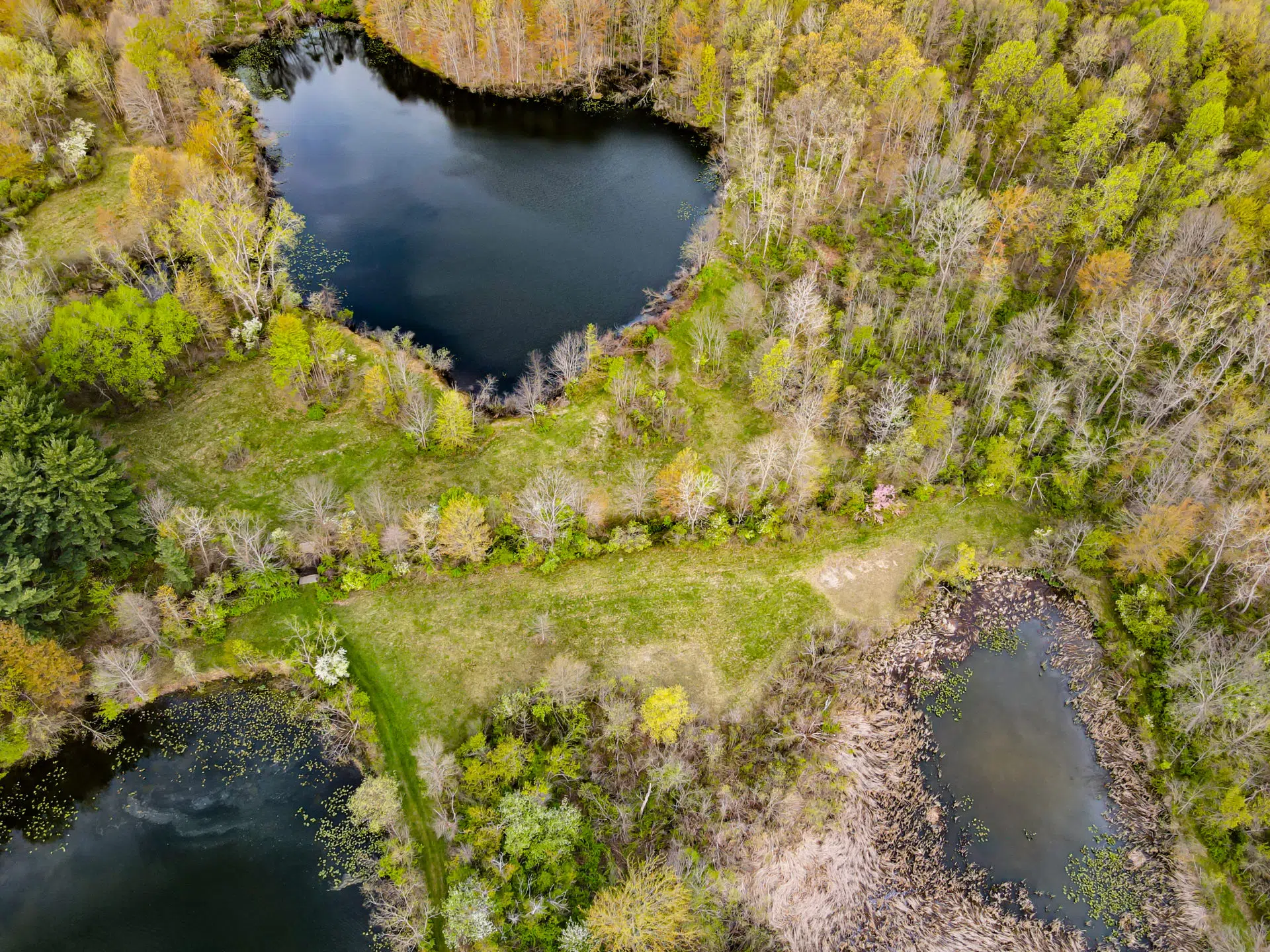Conservation
We stay true to nature’s ways.

We’re home to over 3,500 acres, approximately 3,100 of which are classified as natural areas.
Holden’s natural areas offer an opportunity to better understand how humans and ecosystems can benefit each other. Across the Arboretum’s natural areas, we evaluate ecological conditions and apply adaptive management methods to improve ecosystem integrity including native biodiversity, wildlife habitat, water quality, and resilience.
Our Goals
Conserve – conserve biodiversity and ecosystem integrity
Understand – understand how humans and ecosystems benefit each other
Inspire – inspire regional change in tree conservation and ecosystem stewardship
Our Ecosystems
Woodland
Meadow
Wetlands, streams, rivers, ponds and lakes

2,703 acres, or 77% of arboretum land is forested, ranging from old growth to regenerating agricultural sites.
Monitoring: Regular forest health monitoring helps with management and preservation of our forests.
Management: Forest management, including invasive removal, thinning, and edge feathering of forests improves their wildlife habitat, health, and resilience to pests, disease, and climate change. Holden scientists, along with researchers from Cleveland State University, research how these management practices promote forest biodiversity and ecosystem function.
Pests: Over 250 acres of hemlock stands are protected from pests through our treatment program and work with neighbors.
Disease: Beech leaf disease has been monitored and researched at Holden since its discovery in Lake County in 2012. Our work helps understand the progression of the disease, future work will help manage ecosystems with beech loss.
Demonstration: In the 67-acre Working Woods, we research and showcase forest management practices for natural resource professionals, landowners, and the public to encourage the adoption and replication of best practices.
Non-Timber Forest Products: Maple syrup, mushroom logs, and edible and medicinal plants are all potential forest
products. We demonstrate how managing forests for these products can benefit forests and provide for human needs.
Meadows
Management: Our 512 acres of meadow are managed for multiple uses, including grassland bird habitat, hiking, plant conservation, and collection tree specimens.
Nest Boxes: We monitor and maintain 240 nest boxes in our meadows. Between 1965 and 2022, 28,812 fledglings from 6 native bird species have made home to these boxes.
Forest Expansion: 21 acres of old field meadow are selected for reversion to forest in 2024.
Wetlands
Ecosystem Services: 120 acres of small wetlands are dotted across the property, providing important ecosystem services including improving water quality and providing habitat for wetland-dependent plants and animals.
Fen: The most unique wetland in Holden is a 5.7-acre fen with four documented rare plant species present. We are managing the fen to preserve these species.
Wildlife Conservation: Wildlife monitoring helps us with our goal of maintaining healthy population densities. We also base our land management actions on improving wildlife habitat.
Breeding Birds: Point counts and route-based surveys for breeding birds help us understand habitat use, population trends, and responses of birds to ecosystem management.
Dark-Eyed Juncos: Monitoring and genetic studies indicate that the locally breeding dark-eyed junco population is a non-migratory distinct subpopulation. Ongoing work will investigate winter movements, plumage color, and wing shape of this subpopulation.
Bats: Holden supports eight of Ohio’s ten native bat species. Annual acoustic surveys help us monitor bat activity and diversity and their response to management.
Rare Plants: Over 20 rare plant species are found on Holden lands. Surveys help us protect and manage populations as needed. We also collect and propagate seeds, creating backup populations.
Garlic Mustard Aphid: Garlic mustard is a non-native invasive plant spreading aggressively through our forests. In 2021, at Holden, we found a European aphid species host-specific to the non-native garlic mustard. Ongoing research will help us determine the aphids potential use as a biocontrol agent.
Conservation Easements: Over 1,600 acres of conservation easements are held & monitored by Holden. Together with our natural areas, ~3,500 acres of nearly contiguous forest are protected.
Great Lakes Basin Forest Health Collaborative: This U.S. Forest Service collaboration focuses on finding and breeding ash, beech, and hemlock trees resistant to the invasive pests and disease threatening them. Breeding and replanting these resistant trees will help ensure the diversity and sustainability of our forests for the future.


















